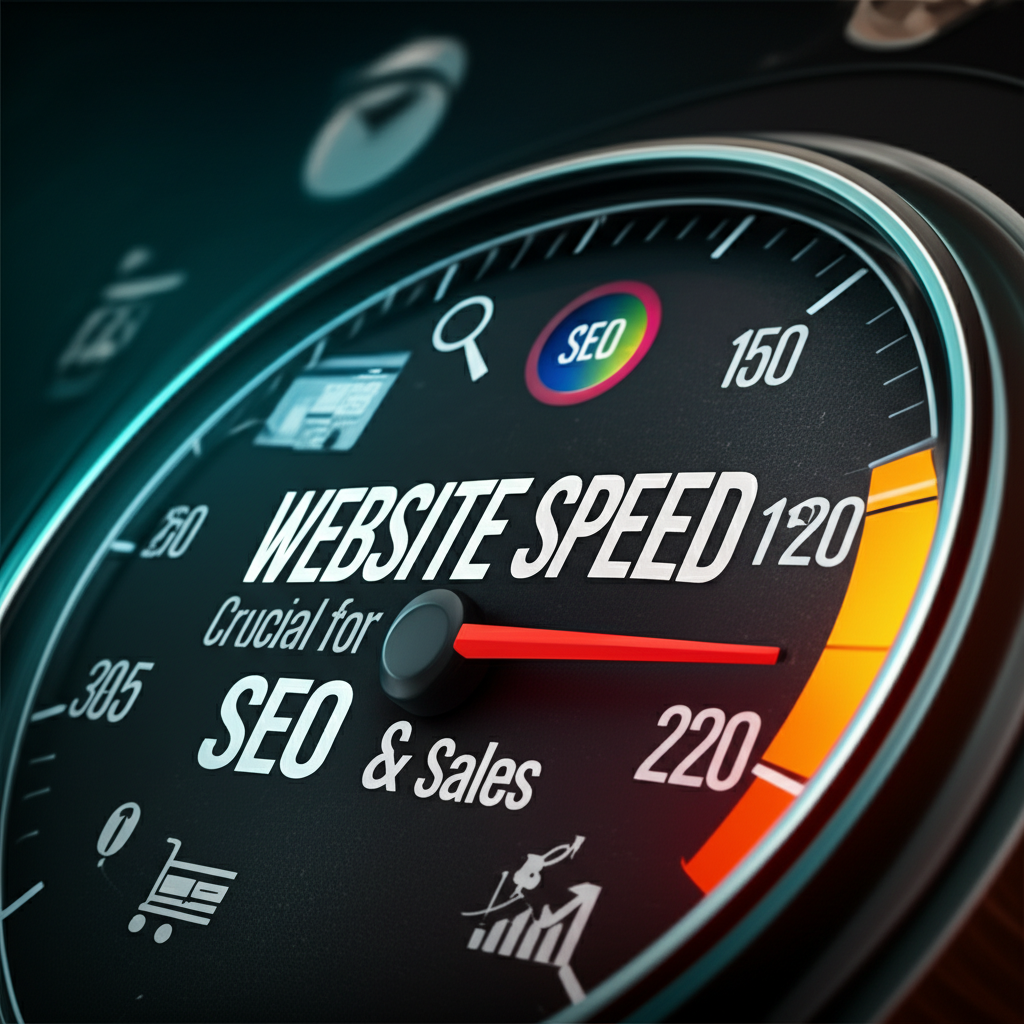- Why Website Speed Matters for User Experience
- The Impact of Website Speed on SEO
- Website Speed as a Core Web Vital
- Mobile-First Indexing and Website Speed
- Strategies for Improving Website Speed
- Website Speed: Investing in Your Online Success
Website Speed: Crucial for SEO & Sales
Website speed is a critical factor for both search engine optimization (SEO) and sales. In today’s fast-paced digital world, users expect websites to load quickly and efficiently. A slow-loading site can lead to frustrated visitors, higher bounce rates, and ultimately, lost revenue. This article delves into why website speed matters so much, how it impacts your search engine rankings, and provides actionable strategies to improve your site’s performance.
Why Website Speed Matters for User Experience

A positive user experience is paramount to online success. A slow website creates a negative user experience, leading to visitor frustration and ultimately driving them away. Think about it: how long are you willing to wait for a page to load? Most users abandon a site if it doesn’t load within a few seconds. This immediate abandonment impacts not only immediate sales but also long-term brand loyalty. Users are less likely to return to a site they perceive as slow or unreliable.
Beyond initial page load, slow navigation between pages also contributes to a poor user experience. If clicking a link results in a lengthy delay, users are likely to lose interest and navigate away. This is particularly crucial for e-commerce sites where users need to browse multiple product pages and navigate through various categories. A smooth and speedy browsing experience is essential for encouraging conversions.
The Impact of Website Speed on SEO
Google has explicitly stated that page speed is a ranking factor. This means that faster websites are more likely to rank higher in search engine results pages (SERPs). Improved website speed translates to improved visibility, leading to more organic traffic and potentially higher conversions.
Website Speed as a Core Web Vital
Google’s Core Web Vitals are a set of metrics that measure user experience, including page speed. These metrics are crucial for SEO and directly influence your website’s ranking. The Core Web Vitals focus on aspects like Largest Contentful Paint (LCP), First Input Delay (FID), and Cumulative Layout Shift (CLS). Optimizing for these metrics is essential for improving both user experience and search engine rankings.
Mobile-First Indexing and Website Speed
With the majority of internet browsing now taking place on mobile devices, Google has adopted a mobile-first indexing approach. This means that Google primarily uses the mobile version of your website for indexing and ranking. Therefore, optimizing your website’s speed on mobile devices is even more critical for SEO success. A slow mobile site can significantly hinder your visibility in search results.
Strategies for Improving Website Speed
Optimizing your website speed isn’t just a one-time task, it requires ongoing monitoring and adjustments. Here are some key strategies to improve your website’s performance:
Optimize Images: Large image files are a common culprit for slow loading times. Compressing images and using appropriate file formats like WebP can significantly reduce page size without compromising quality.
Leverage Browser Caching: Enabling browser caching allows users’ browsers to store static assets like images and CSS files, reducing the amount of data that needs to be downloaded on subsequent visits.
Minify HTML, CSS, and JavaScript: Removing unnecessary characters and whitespace from your code can reduce file sizes and improve loading times.
Use a Content Delivery Network (CDN): A CDN distributes your website’s content across multiple servers geographically closer to your users, reducing latency and improving loading speed for visitors from different locations.
Choose a Fast Hosting Provider: Your hosting provider plays a crucial role in your website’s speed. Opting for a reliable and performance-optimized hosting plan can significantly impact loading times.
Implement Lazy Loading: Lazy loading defers the loading of non-critical resources, such as images below the fold, until they are needed. This prioritizes the loading of above-the-fold content, improving the perceived loading speed and user experience.
* Regularly Monitor Your Website Speed: Regularly test your website speed using tools like Google PageSpeed Insights and GTmetrix. These tools provide valuable insights into areas for improvement and allow you to track your progress over time.
Website Speed: Investing in Your Online Success
Improving website speed is not merely a technical task; it’s an investment in your online success. By prioritizing website speed, you are investing in a better user experience, improved SEO, and ultimately, increased sales and conversions. Implementing the strategies outlined above can significantly enhance your website’s performance and help you achieve your online business goals. Make website speed optimization an ongoing priority, and you’ll reap the rewards of a faster, more efficient, and more successful online presence.











Leave a Reply